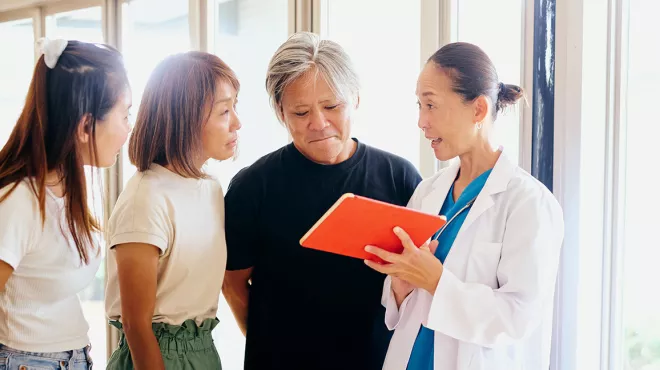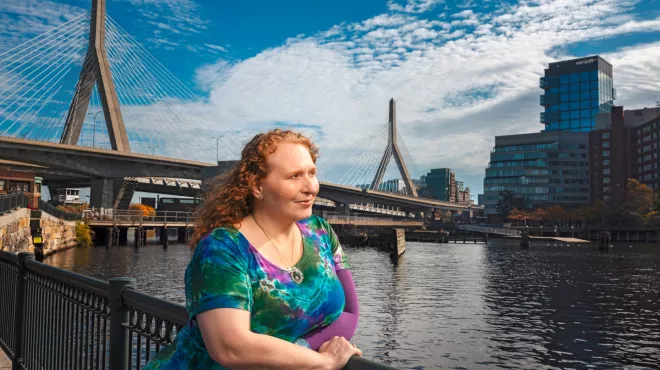
Perhaps you, like me, expected cold-like symptoms to go away quickly. I was in my early 50s when my cold turned into a chronic cough, and my symptoms – shortness of breath, fatigue and cough – were mistaken for pneumonia. During the months that followed, I met with a pulmonologist and had a battery of tests including X-rays, a CT scan, a bronchoscopy and a surgical biopsy. We were optimistic and believed it wouldn’t be cancer. That all changed quickly.
Waking up from the surgical biopsy to see my husband’s strained face and learn from him that I had lung cancer is a vivid memory I will never forget. My test results showed cancer in the linings of my lungs. I was given information about chemotherapy and radiation, as well as a series of statistics. It was my brother, familiar with cancer research, who asked our doctor a question about biomarker testing and second opinions. I was lucky to have a strong support system by my side: my husband, sons and brother advocating for me when I didn’t feel strong enough to advocate for myself. Before accepting this diagnosis and a recommendation from our initial doctor to not pursue testing, we sought a second opinion with another oncologist at an academic medical center a few hours from my hometown.
During the next part of my journey, I was introduced to certain medical terms and innovations. My oncologist explained that a variety of factors can cause lung cancer, and he ordered biomarker testing for me immediately. He and his lab team collected samples for testing over the next few weeks.
Through this experience, I learned that there are many different types of lung cancer. I encourage newly diagnosed lung cancer patients to ask their doctors about biomarker testing. Today I am continuing to receive care from my oncologist, and I am finding ways to live life with my disease.
A #lungcancer patient shares her experience with biomarker testing.



